|
May 6, 2010 - Oxygen Microscope software version 3.1 build 741 is available.
The new special release contains Automatic cloud allocation
Automatic cloud allocation feature is designed for fast plotting of large groups of point inclusions. Plotting large point clouds like the one you can see on the screenshots below can be extremely time-consuming. With this new feature plotting is done automatically so all you have to do to allocate a cloud is to make a few mouse clicks.
If the cloud inclusion is inside a future diamond it will be photorealistic visualized.
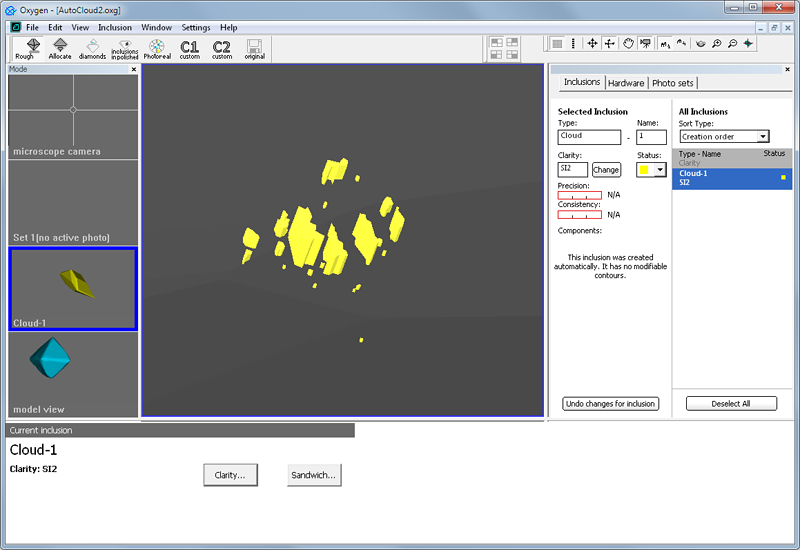
Automatic cloud plotting
- Automatic cloud allocation
- Step 1. Set cloud position in microscope
- Step 2. Define cloud contour
- Step 3. Set starting position
- Step 4. Set terminal position
- Step 5. Cloud automatic allocation
- Step 6. Cloud visualization
- Splitting cloud parts
1. Automatic cloud allocation |
|
The follow section describes how to create a cloud automatically
Procedure outline:
- Step 1. Set cloud position in microscope
- Step 2. Define cloud contour
- Step 3. Set starting position
- Step 4. Set terminal position
- Step 5. Cloud automatic allocation
- Step 6. Cloud visualization
Step 1. Set cloud position in microscope
1. Switch to Microscope camera mode and focus on the central part of the cloud
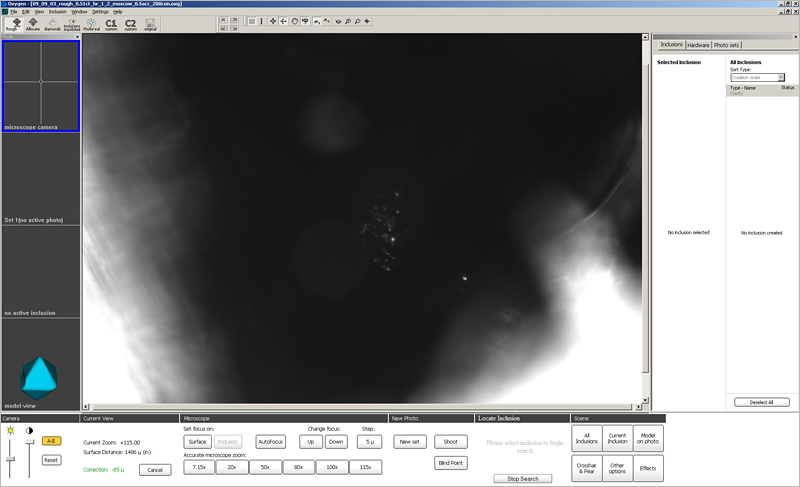
2. Make sure you have chosen an optimal view direction - green pear at the center of the screen. You will not be able to change view direction during auto cloud creation, only focus can be changed.
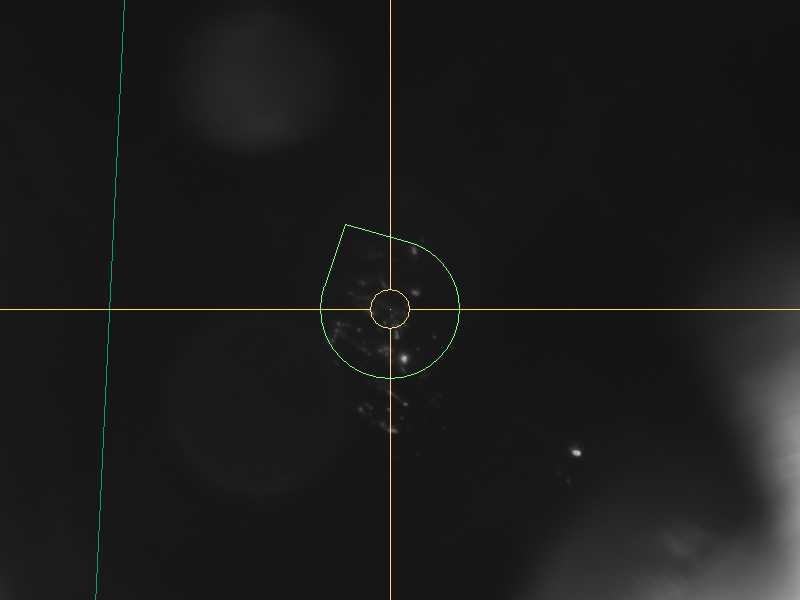
3. Select New Auto Cloud item from the context menu
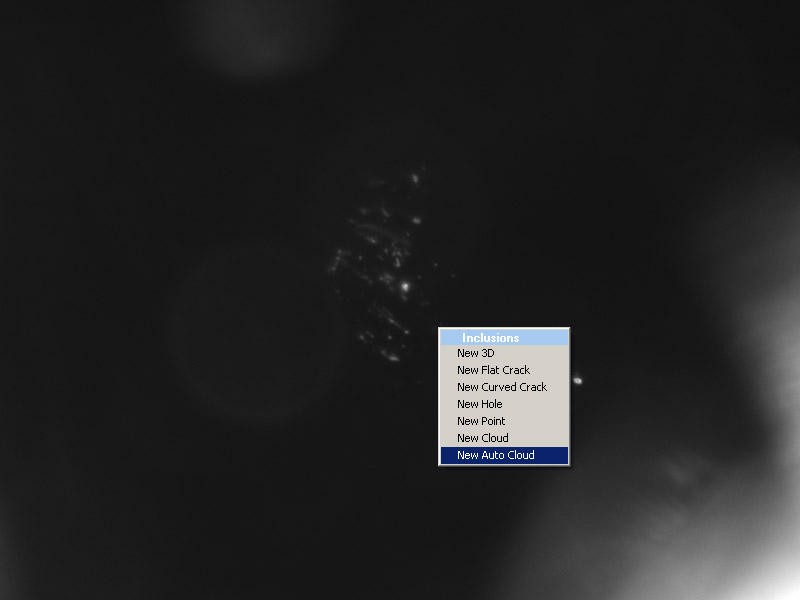
Note. New Auto Cloud item appears in context menu only in Microscope camera mode:
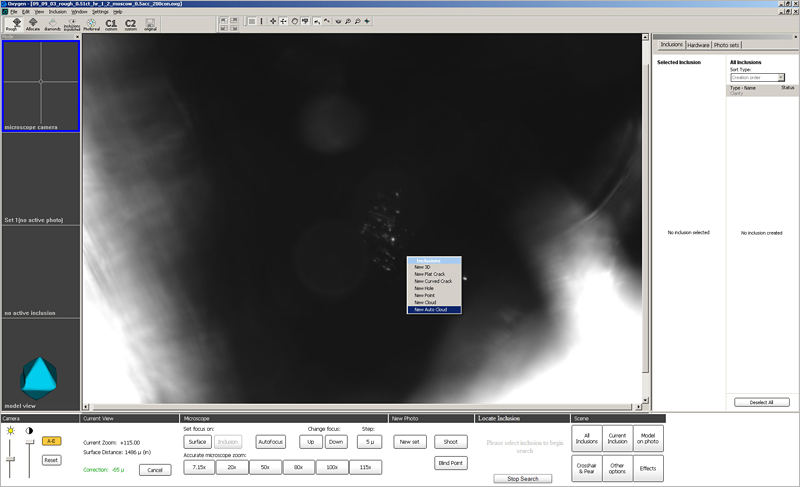
Step 2. Define cloud contour
Define cloud contour as shown on the screenshot below
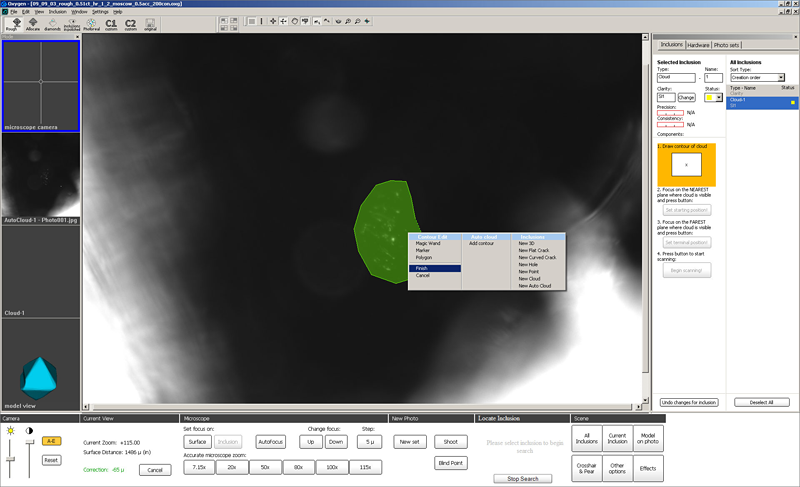
Step 3. Set starting position
Now specify starting position for scanning:
1. Focus on the beginning of the cloud
We recommend to find the point of the cloud that is nearest to the stone surface and focus on it
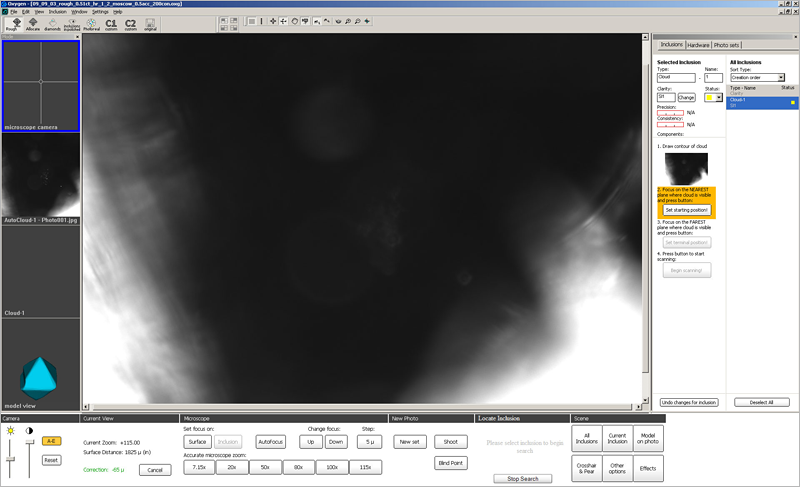
2. Press button Set starting position! at the Inclusions panel
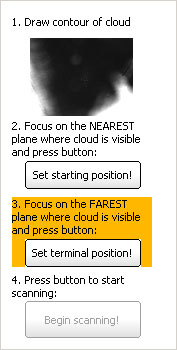
Note: Do not change the translation stage position and do not rotate the stone during step 3 and all the next steps. If you moved or rotated the stone during autocloud creation, an error message would be shown and you would have to enter all the components for autocloud once more. To do it, first click on the thumbnail of cloud contour on the right panel, then repeat the procedure of autocloud allocation from the first step.
Step 4. Set terminal position
In the same way specify terminal position of the scanning:
1. Find the deepest point of the cloud and focus on it
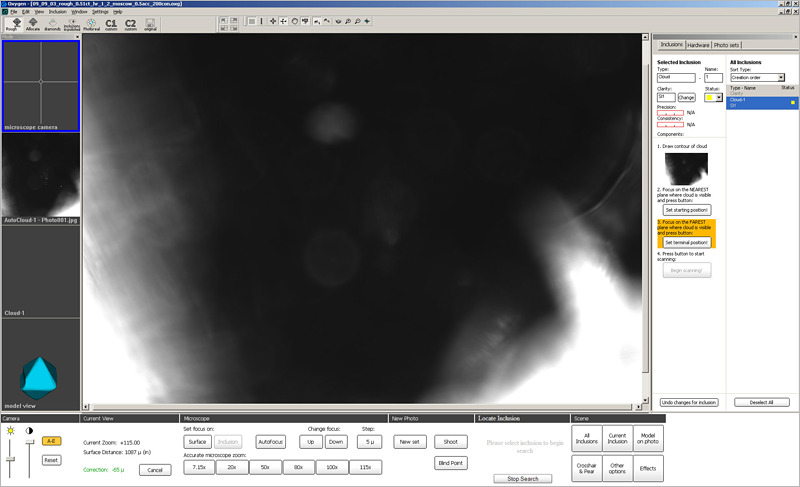
2. Press button Set terminal position! in the Inclusions panel
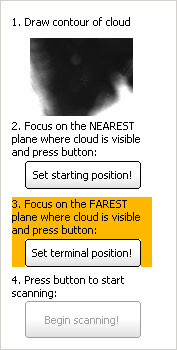
Step 5. Cloud automatic allocation
Now press Begin scanning! button and wait
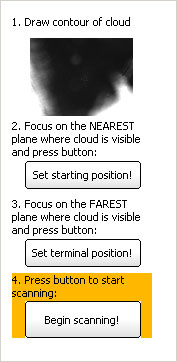
Progress window will be shown to indicate the process of cloud allocation. Allocation process may take from 10 seconds up to 1-2 minutes depending on the cloud size and computer configuration
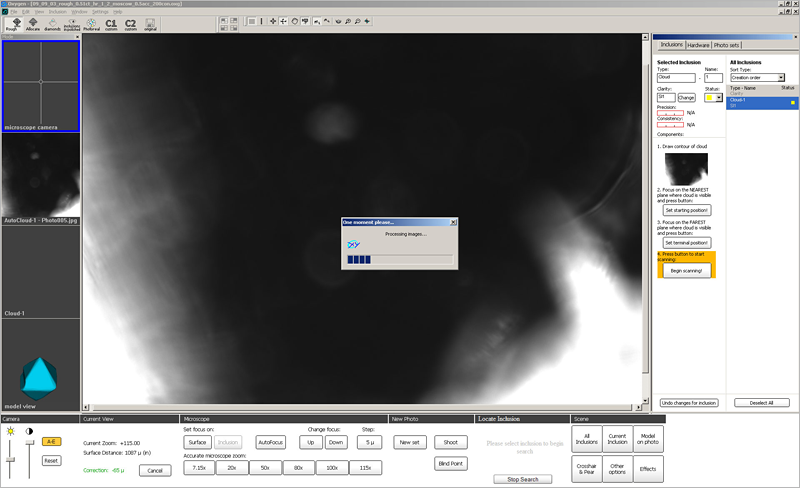
Step 6. Cloud visualization
After finishing allocation process inclusion model of cloud is ready
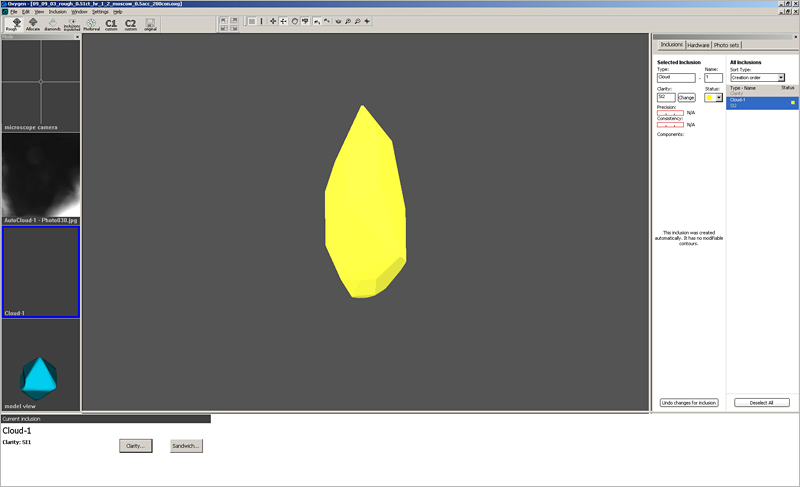
3D models visualization
3D model of allocated cloud inclusion can be observed in two modes:
- Full area of probable location of the cloud
- Assumed size
| Full area of probable location of the cloud |
Assumed size |
| Cloud is shown as one inclusion |
Cloud is shown as a set of point inclusions |
 |
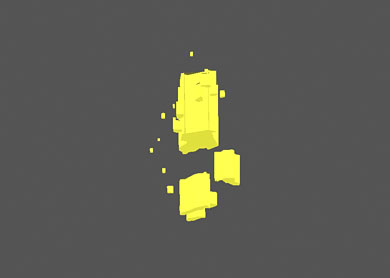 |
To see cloud in full area size mode select from menu Inclusion / 3D Visualization / Full area of probable location 
|
To see cloud in assumed size mode select from menu Inclusion / 3D Visualization / Assumed size 
|
Visualization inclusion contours on photos
To see cloud on photos:
1. Switch to Photo sets tab
2. Find photos that have been taken during the cloud scanning
3. In the center of the screen see the allocation results.
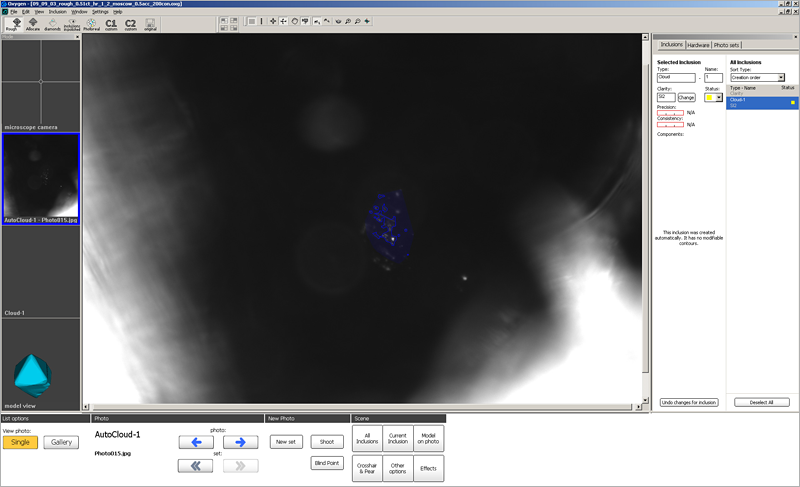
Oxygen displays:
- reprojection of cloud 3D model that will be used for optimization by blue, transparent (see on screenshot below)
- contours of cloud points by blue contours (see on screenshot below)
- contours of 3D inclusions found during cloud allocation by light-purple contours (see on screenshot in the next section Splitting cloud parts)
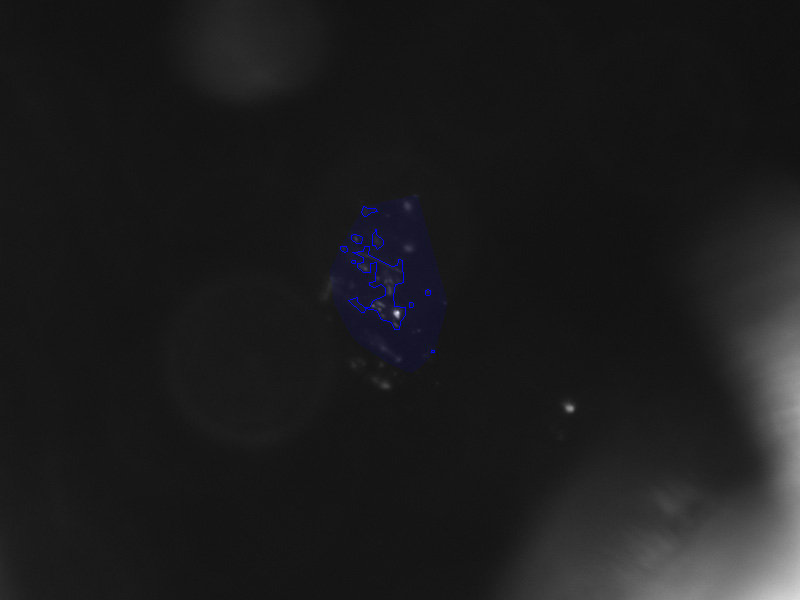
We recommend to look through all cloud photos and make sure that all cloud points are allocated correctly
Oxygen Microscope Server download
| 



















